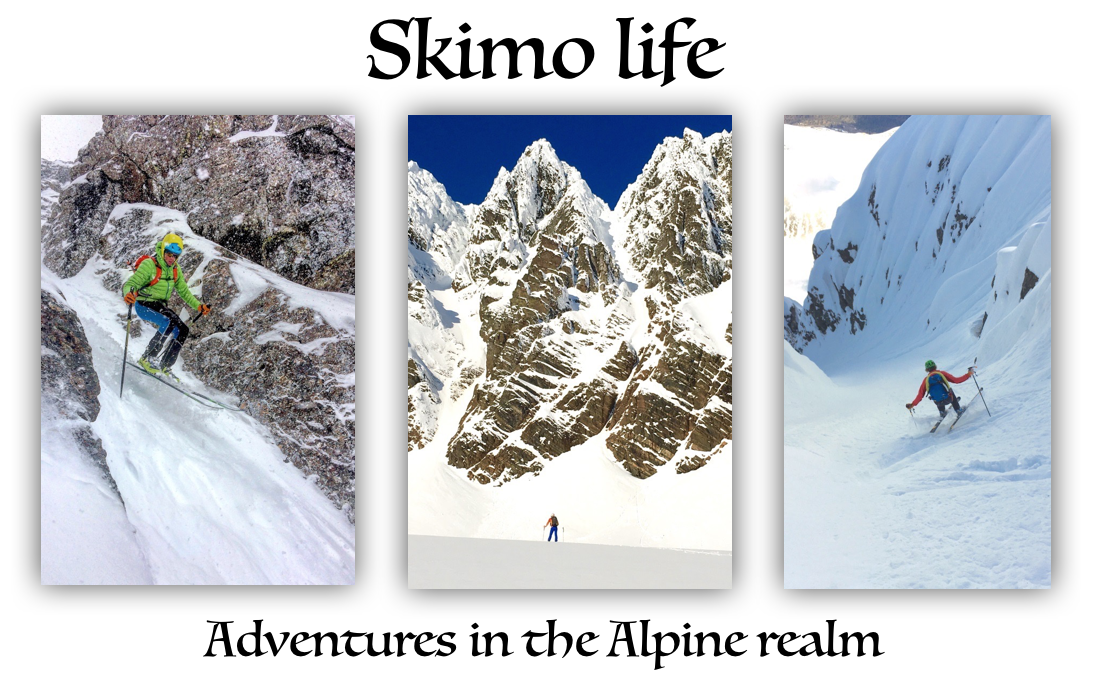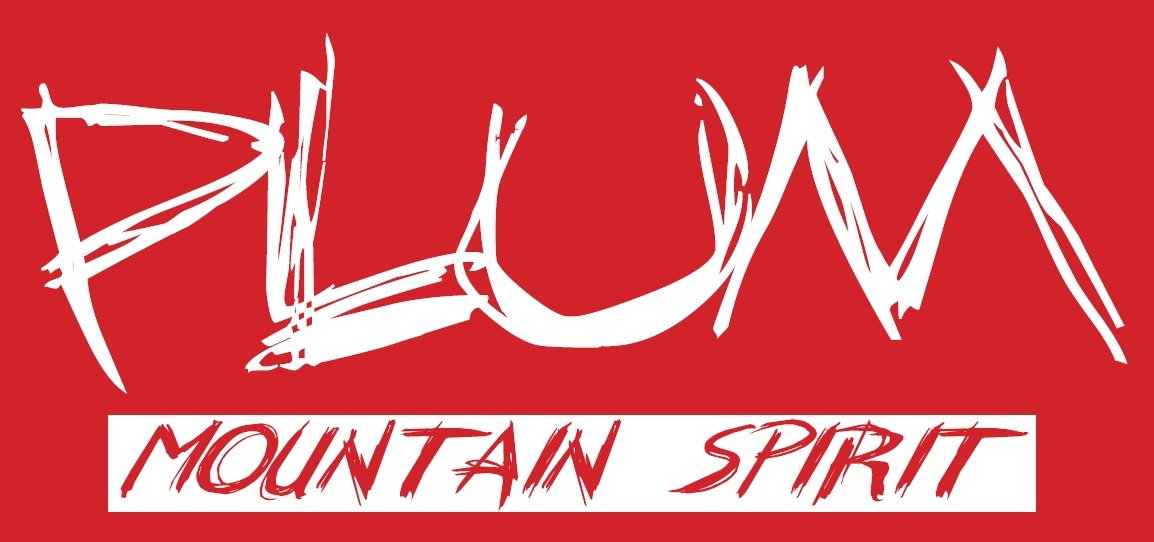Time to Get Fit
 Saturday, October 8, 2011 at 06:09PM
Saturday, October 8, 2011 at 06:09PM  Hill bounding hurtsHere in Jackson we're having one of the best autumns in recent memory. Week after week of splitter blue skies and warm temps nearly make me forget that the ski season is almost upon us. But changing colors and cool mornings lately are reminding me that early season preparation needs to begin in order to be ready to skimo race in January.
Hill bounding hurtsHere in Jackson we're having one of the best autumns in recent memory. Week after week of splitter blue skies and warm temps nearly make me forget that the ski season is almost upon us. But changing colors and cool mornings lately are reminding me that early season preparation needs to begin in order to be ready to skimo race in January.
Doubts about the bike
Historically, I've spent the summers riding and racing my road bike as early preparation for ski mountaineering. Although it provides a great cardiovascular base upon which to build sport-specific training, I've had a suspicion it's not the best choice. I've commented often in these pages about the importance of movement specificity when it comes to training for sport. I think that cycling is different enough from the ski touring movement pattern that it's utility is significantly compromised.
A number of factors came into play this past spring and summer that kept me off the bike and on a trail running regimen for the first time in my athletic career. My impression, thus far, is that running is better preparation for skimo than cycling. There….I said it. I know my mountain biking friends will disagree and I will admit that the second part of the experiment is looming (racing) but the idea of trail running to prepare for skimo simply makes more sense to me.
First of all, the movement patterns of each are similar, certainly more so than cycling and skimo. Second, it's not just a little compelling that the best skimo racer in the world, Kilian Jornet, is also one of the world's best ultra runners. If it's good enough for Kilian, it's good enough for me. I'll let my bike collect dust if I can be faster when the snow flies.
Run with caution
As a new runner, I've tried to let common sense prevail, being more than a little familiar with the over use injuries common in runners. I've told more than one patient to back off of running and get on the bike when this type of injury brings them into the clinic. I've continued to heed this advice in my own training, avoiding running consecutive days and cycling or roller skiing on alternate days. Even with this modest schedule, I've been able to up the mileage significantly over the summer.
Unlike "real" runners, I don't have impressive weekly mile averages to report. I really have no idea. But I've tried to get a couple of one to two hour runs in during the week and a longer three to five hour effort on weekends. This kind of program won't make me fast or impressive by most running standards but it might keep me from getting hurt while still developing the aerobic base required for more specific skimo training later on.
I've tried to keep this kind of training loose and free-form without any specific intervals or speed work. There will be time for that later. But that's not to say this running has been easy. For better or worse, when the trail turns up, I'm nearly always at threshold when climbing for longer than 5 minutes. This is due to either my waning aerobic capacity or my inefficient running form. Either way, I get some quality work done when I hit the trails in my sneakers.
Zeroing in on the target
With the foundation laid and October here, it's time to start a more regimented program in order to perform at my best in January. The easiest way to approach this is to start with the key event date and work backwards. I think that in the properly conditioned athlete, 12-16 weeks are required for a decent peak. For professional athletes preparing for one event, a longer macro cycle could be used but for us working stiffs, three months is adequate.
 I'm going to use the first 4 to 5 week mesocycle to introduce sport-specific training into my program. For a skimo racer this demands roller skis. I've got 'em. V2 3-wheelers with speed reducers so I don't die on the descents. I try to keep the training on hills since that is where skimo races happen. Again, more sport-specificity here. I will be happy if I can get 10 hour weeks in during this period, not including accessory training in the weight room. Like usual, I will try to get that up near 15 hours or better during peak volume cycles.
I'm going to use the first 4 to 5 week mesocycle to introduce sport-specific training into my program. For a skimo racer this demands roller skis. I've got 'em. V2 3-wheelers with speed reducers so I don't die on the descents. I try to keep the training on hills since that is where skimo races happen. Again, more sport-specificity here. I will be happy if I can get 10 hour weeks in during this period, not including accessory training in the weight room. Like usual, I will try to get that up near 15 hours or better during peak volume cycles.
If you don't have roller skis then you can get the job done running hills with poles. I like to do some low intensity hiking broken up with regular running and intervals that mimic the classic nordic stride with poles. Roller skis are better but striding with poles is pretty demanding and the movement more sport specific than straight running.
Weight training
For those who have been reading this stuff for a few years, you know I'm a big fan of the weight room. The downhill portion of skimo races kills many racers who don't have the strength to weather the short but demanding hit on their legs delivered by these sections of most courses. As I like to say, you may not win the race on the downhill but you can certainly lose it there.
The other reason for endurance athletes to get into the weight room for at least a portion of each year is to correct musculoskeletal imbalances that develop during heavy periods of single-sport participation. If you can keep additional lean tissue from piling on your frame from lifting weights, the additional strength will not go wasted. Most athletes who excel in endurance sports tend to be "hard-gainers" in terms of mass so it's usually not a problem. For the rare aerobic type that can bulk up, attention to program design can eliminate most of the tendency.
The majority of the attention should be on the legs but some attention to the core, both posterior and anterior chains, should be addressed. I typically throw in some body weight upper body exercises like push-ups and pull-ups to break up the session and to strengthen some seriously neglected body parts. Any mass gained here will be quickly dropped once big volume days start and the weight program is relegated to maintenance status. I will address specific exercise selection in a later post.
So, for aggressive, performance-oriented ski tourers and skimo racers, the time is now to get out on the trails and roads and lay the foundation for a bang-up early season. By doing so, you'll be flying by your friends on the boot pack and skin track when the snow piles deep enough to get out there.
 Brian | Comments Off |
Brian | Comments Off |  dryland training,
dryland training,  roller skiing,
roller skiing,  skimo training in
skimo training in  Skimo Training
Skimo Training 





Reader Comments (4)
Brian:
I recently found your blog and very much enjoy it. You really have some informative and thought provoking articles on your blog. I share some of your interests, (running, lifting, climbing), and am also sneaking up on 50 years on this planet. I have been up the Grand a couple of times and have gotten into running late in life, (just registered for Boston 2012, which will be my 3rd marathon). I am also trying to keep my fitness balanced by experimenting with some different strength/lifting routines and goals to supplement all my marathon training. I look forward to following your progress and learning from you.
Hey Kent,
Thanks for the comments. Nice to have you on board.
I think guys like you get extra points for getting after it at your age. As you can tell, I think keeping it varied is the key to longevity in athletics. Leave the long-term, single-minded focus to the young bucks. Their bodies can handle it better.
For us, do lots of different stuff. Focus on one thing for awhile if you want to compete and excel but break it up when you can. Above all else, don't get weak. We need to hold onto as much lean tissue as we can.
Hi Brian! Been following your blog for a while now, great combination of training science, trip reports and gear-geekiness!
Do you have any tips for knees that hurts after doing lots of descent in the mountain? I try to spend as much time as possible climbing, skiing or running but I'm a bit worried I'm gonna destroy my knees in a few years. I have recently started using poles which definately seems to help and try to ski down as much as possible when there's snow around.
Any exercises you can do to strengthen your knees for example?
/Edvin Mellergård
Hey Brian,
Love reading the blog. I have asked you a question or two in the past, but I have another for you. Last winter I skied probably 5-7 days a week, with a mix of 30% resort skiing and 70% touring. Tours varied from short stuff like Maverick etc to longer days like the Ellingwood, Spoon, and some long tours, including the pass to the village. On top of this, I spent 3 days a week at Mountain Athlete and a day or two at the climbing gym. Towards the end of the winter, I started to get a little slow and tired, but didn't really connect the dots. Now, it is 7 months later, and I am still tired frequently, irritable, and just generally feel like I don't have any gas in the tank going into workouts or activities.
I have taken some time off, and usually after a few days I feel pretty good. Once I go out and try to run, ride, climb, whatever, I end up feeling tired and grumpy again, low energy, yawning alot. I feel like I probably overtrained last winter, but thought it would have been gone by now. Any thoughts?